Affiliate links may be included for your convenience. View our privacy and affiliates policy for details.
I recently wrote a post about what I think about when choosing yarn for a knitting project, which is about how to substitute yarn in a general way.
But there’s been a lot of talk in the knitting community the past few days about offering more yarn options in knitting patterns and whether it is the designer’s job to do so.
Is offering yarn substitution options another step toward inclusivity, or does it unfairly put more labor on the designer?
Inclusivity in the Knitting Community
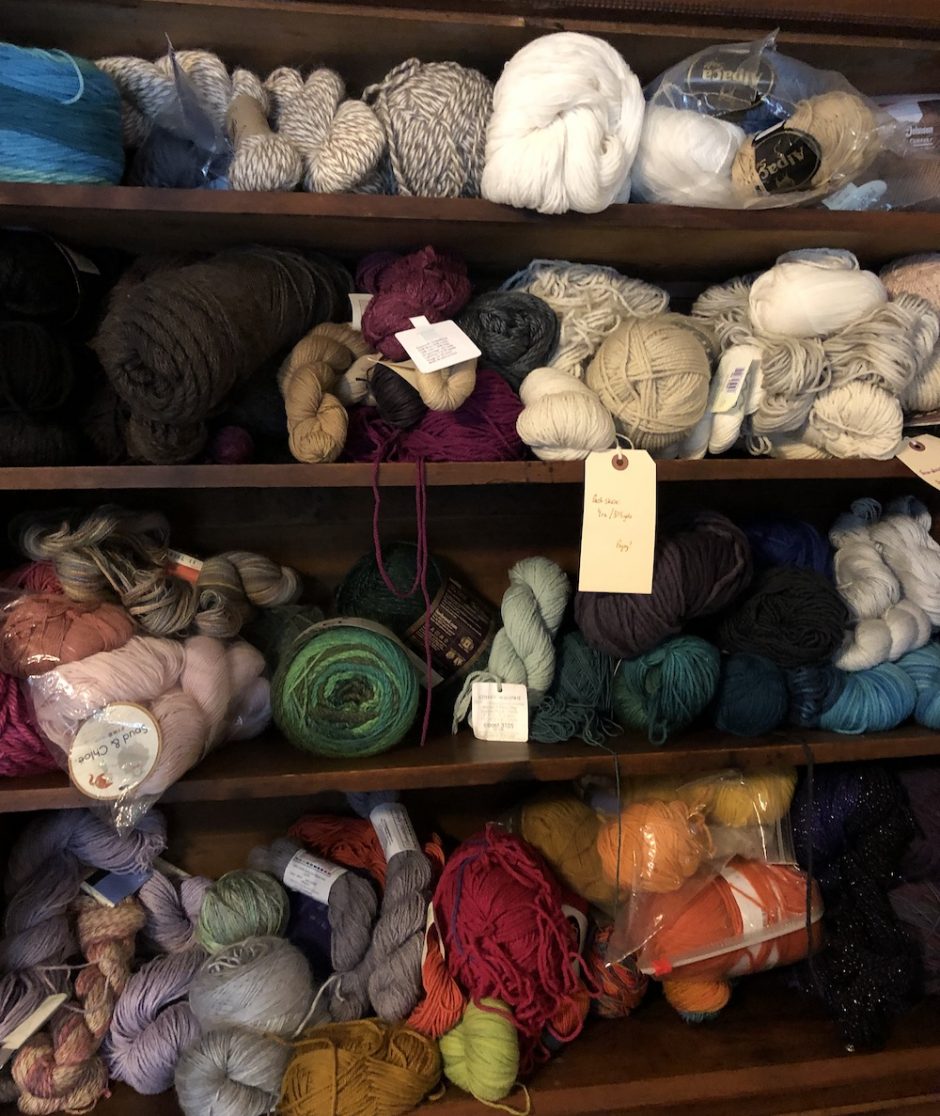
The past year and a half have seen a lot of discussions about inclusion in the knitting community, from highlighting racism and the lack of visibility of designers and yarn makers of color to exploring the need for larger size ranges in pattern design.
Ravelry’s recent redesign has people talking about how website design produces another barrier for some knitters. And some designers have started thinking about what they charge for patterns, attempting to balance making a living with making their patterns accessible to people with lower incomes.
The debate about whether and how much people should charge for patterns comes up all the time, but I’m not sure I’ve heard such a wide discussion about providing yarn substitutions in the context of inclusivity before.
How Designers Choose Yarn
Knitwear designers can pick the yarn they use for their projects in lots of different ways. They may be friends with an independent yarn maker or want to promote a yarn maker and ask to partner with them for a design.
They may have yarn in their stash they want to use for a project.
The designer might contact a larger yarn company and ask for yarn support for a design. These arrangements can also be made with independent spinners and dyers, where yarn is provided to create the design.
Designers may also have a particular kind of yarn in mind for their design and purchase the yarn themselves.
The designer’s job is to choose a yarn that best reflects what they are trying to do with their design.
These days when I design I am mostly using yarn in my stash or buying something specific for a project, though I have used yarn support for my books and other projects.
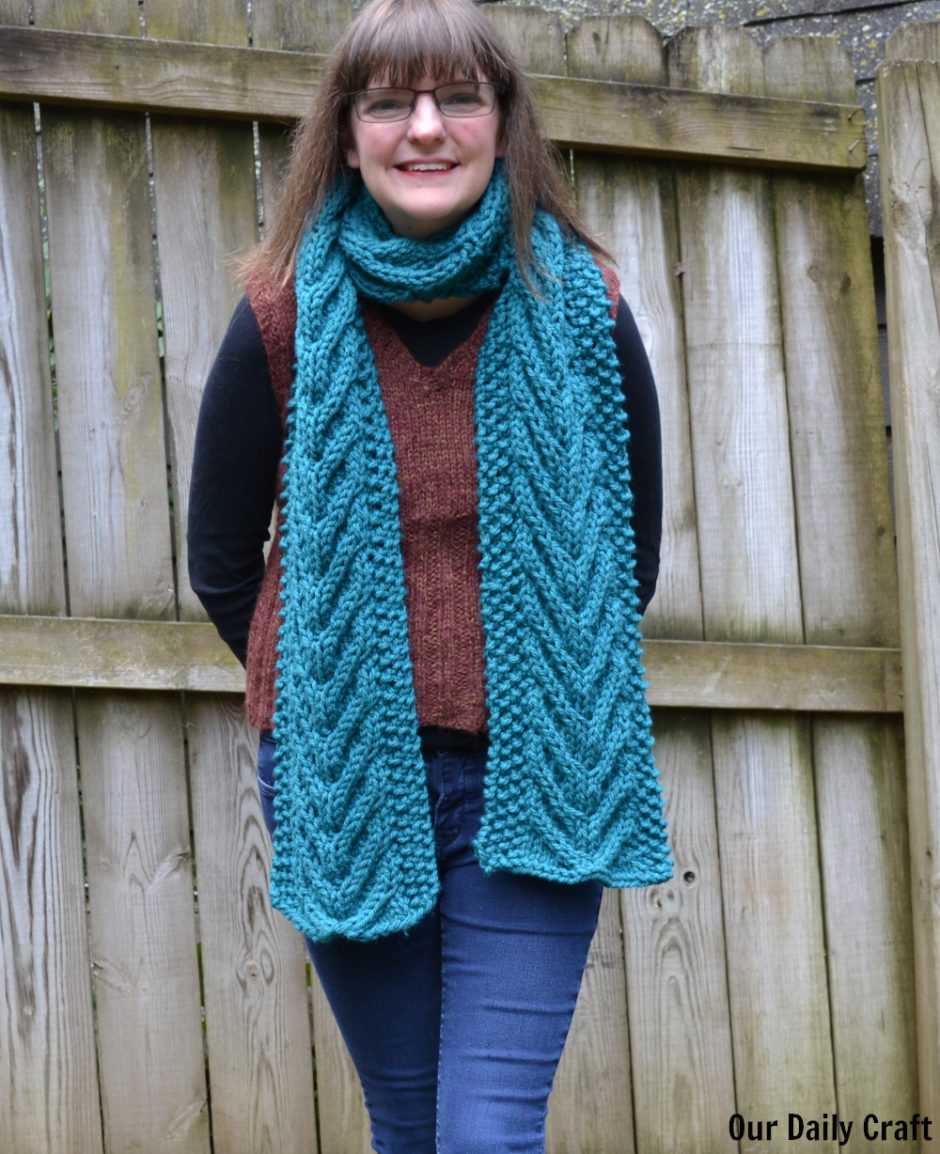
For the most part I have tried to use yarns that were easily available at yarn stores or online, but I sometimes used yarn I liked that might be harder to find, trusting that people would seek it out if they wanted or find their own alternative.
Why Would You Want to Substitute Yarn?
There are lots of reasons you might want or need to know how to substitute yarn in a knitting (or crochet) project.
The yarn used in a pattern might be too expensive for you, or you might not like the colors. There could be a limited quantity available if the yarn in question was made by a small indie dyer.
You might be allergic to wool or need something that’s machine washable.
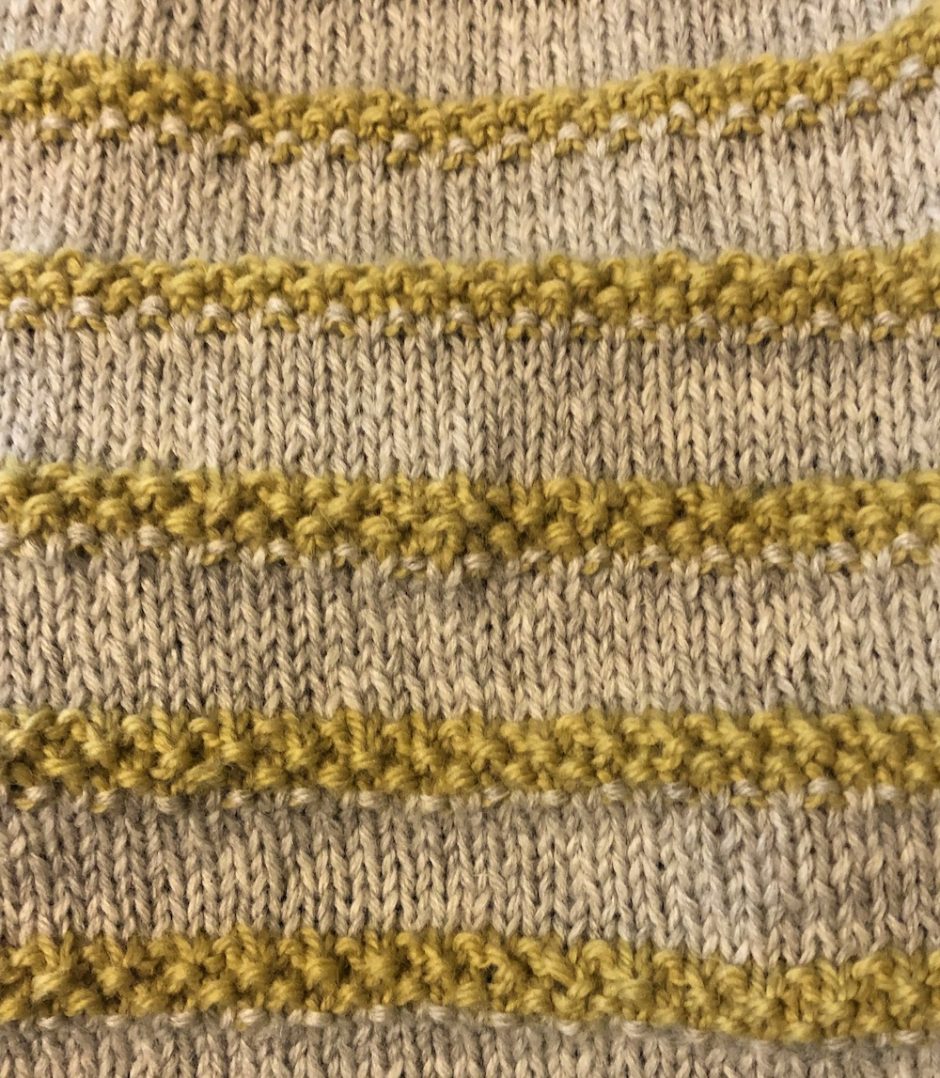
If you’re working with an older pattern, the yarn might be discontinued.
Maybe you are trying to knit from your stash so you need to find a yarn you have that will work for the pattern.
All of these reasons are totally valid and are good reasons to learn how to substitute yarns.
Whose Job is it?
The debate going on right now centers on whether it is the designer’s job to offer yarn substitution ideas or if the knitter is on their own to determine what yarn to use.
Speaking as a designer I think it’s great if the designer wants to give you some ideas for yarn substitution, but there is no way to cover all the possible needs of knitters who might want to use your patterns.
For example if the designer chooses a wool yarn and you’re allergic, should the designer be expected to suggest a substitute that’s not wool? (Knitty founder and editor Amy Singer, who is allergic to wool, brought up this question in a post on Instagram as a response to her comment that it should not be up to designers to suggest substitutes.)
If they choose a higher-end yarn, should they offer lower-price options? How low? If you don’t like to shop online and your only place to buy yarn is a craft superstore, do you expect every pattern to offer options that are available there? Should non-American designers be expected to offer suggestions for yarns that are more easily accessible in the states even if they aren’t available where they live?
Making it an expectation that designers will do the work of yarn substitution for knitters places another burden on them in terms of time and potential expense that likely couldn’t be reflected in raising pattern prices.
To do it well, designers would have to research other yarns and buy or request them from yarn companies and at least knit a swatch if not a full garment to see if the yarn in question works the same as the original. And, again, having one or two other options still doesn’t mean you please everyone.
Just like we don’t consider it the designer’s job to teach every skill needed in a pattern within the pattern itself, it should be fair to assume that people with the skill to knit the pattern (or do a little googling) can also substitute yarn on their own.
It is, however, absolutely the designer’s job to provide as much information as they can about what kind of yarn was used and how much of it is needed (for each size, not just a range) so that people can figure out how to substitute yarn on their own.
Using Pattern Info to Substitute Yarn
One thing that a lot of designers do these days is have test knitters who produce their own version of a project before it is released. This gives the designer (and future pattern purchasers) the chance to see the project in different sizes and often in different yarns.
It’s a chance to make sure the pattern is well written, makes sense and fits a range of people. This process could also help with choosing alternative yarns if the designer or the test knitters share what yarn was used in their projects.
One way to do this research on your own if you are able to access Ravelry is to check the patterns there.
For instance if you look at the Easy Teesy pattern by Allison Cribbs (chosen at random from the popular patterns on Ravelry as I was writing this) and click on the projects tab, you can see all the projects that have been made and entered in Ravelry.
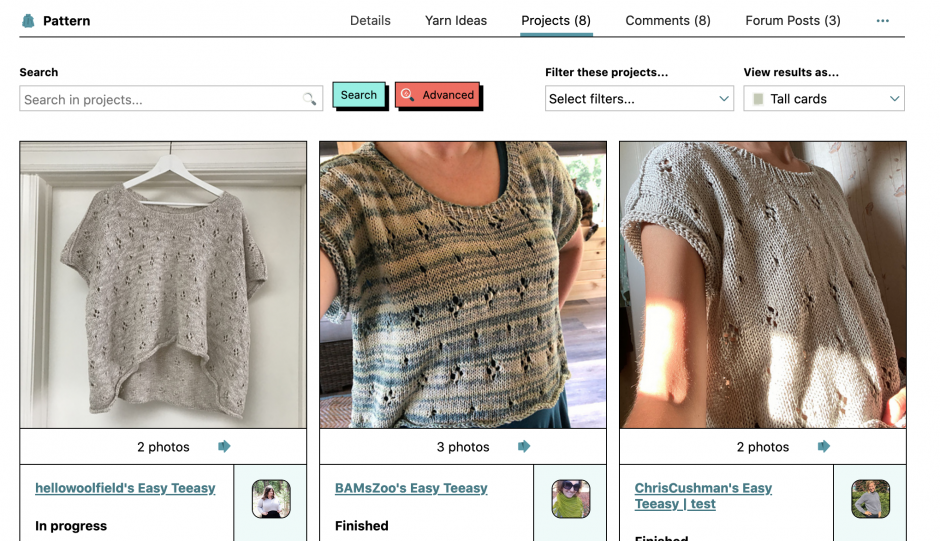
So while the designer chose Hu Made Watercolor Cotton — a yarn that retails for $26 a skein — you can see that other knitters chose yarn from Cascade, Ella Rae and Juniper Moon, among others.
This is a great place to check not only for options that might be at different price points but to compare the look of the finished project in different yarns to the original when there are project photos.
If you can’t access Ravelry right now, check the designer’s Instagram or blog. They may share the yarns their test knitters used. Or scope out Instagram for the pattern hashtag, search that and see what other knitters are using for their projects.
How to Substitute Yarns Yourself
If you don’t find a yarn that meets your needs after doing some research on the pattern, you’ll need to know how to substitute yarn on your own.
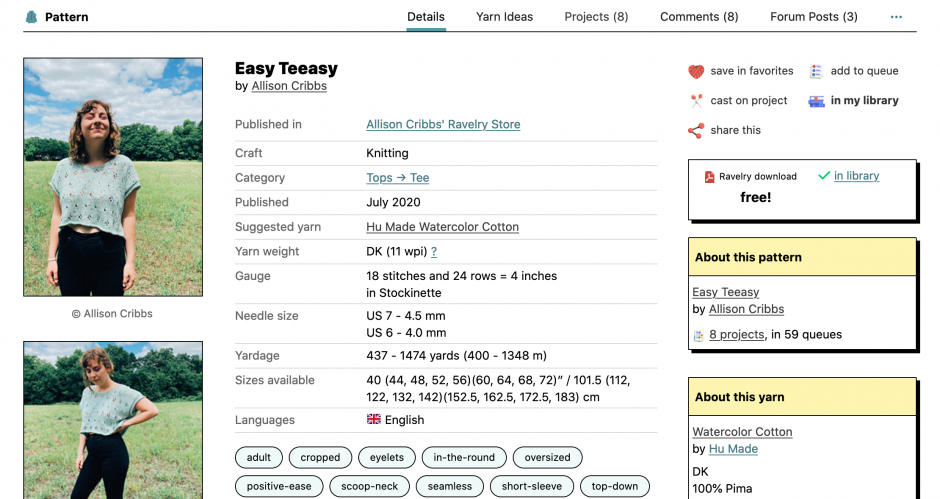
First, take a look at the yarn the pattern calls for. What yarn weight, fiber content and gauge is required? Going with the example above again, she used a 100 percent pima cotton in DK weight.
Since this is a summer tee, you’ll probably want to stick with cotton or a cotton bamboo blend for coolness and structure. Because it will be touching skin, you’ll want something soft.
A quick internet search of DK weight cotton yarn brings up all kinds of options at all kinds of price points. If your local yarn store is open you’ll likely find some good options there, too.
How do you know which one to pick? If the weight, gauge and look of the yarn (such as you can tell in photos on the Internet) feels right, and the price point is good for you, give it a try.
In a perfect world you might buy a single skein or ball and test it before you buy the quantity needed for a garment, but return policies are usually generous for unused yarn if you buy a bunch and find you don’t like it.
If you are buying garment quantity, remember to take a look at the yardage requirements for the pattern you want to make and the size you want to knit and make sure you buy enough to cover that.
For this particular example I might try Lion Brand Comfy Cotton Blend or Coboo, or Bernat Softee Baby Cotton.
What to Look for in a Substitute Yarn
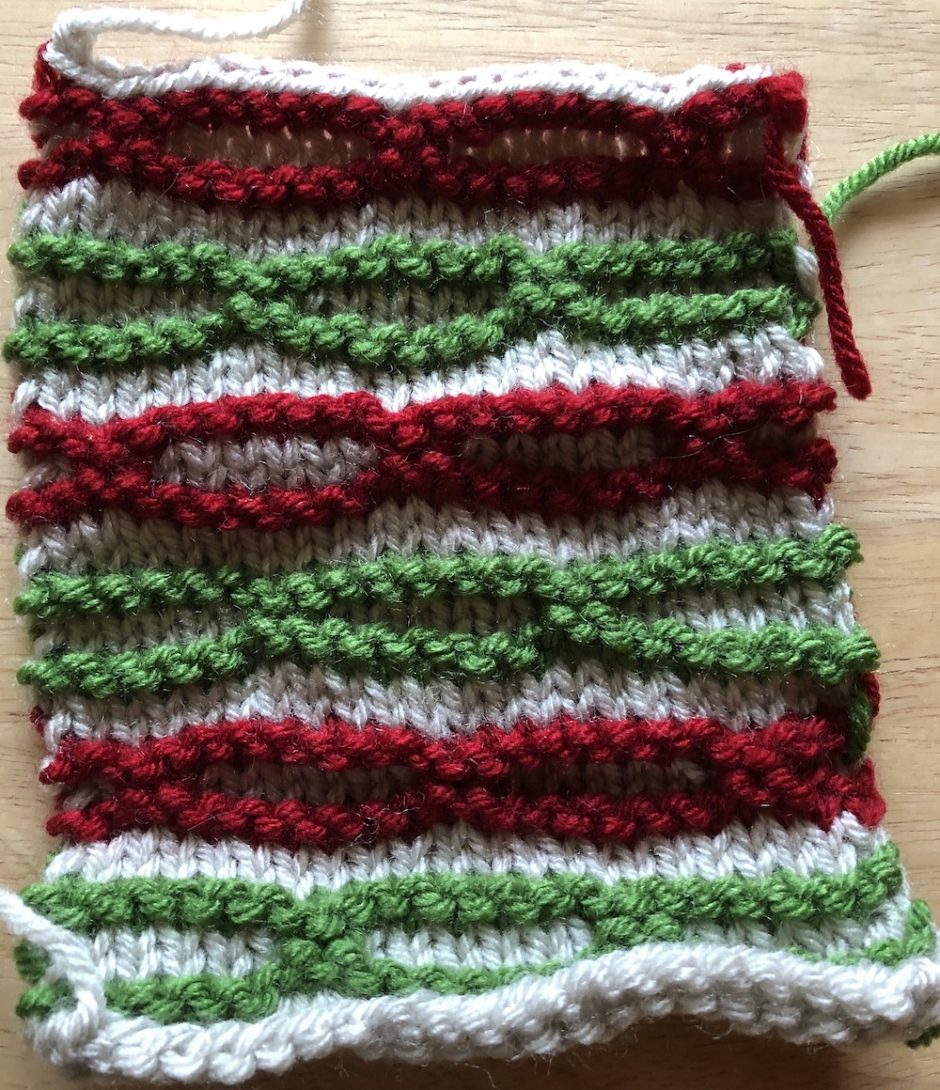
When shopping online — or even in person — you won’t have all the information you need until you take the yarn for a spin.
So get out the suggested size needles, grab your yarn and make a swatch.
Here’s what you’re looking for:
- Can you get gauge with this yarn? Remember you can always change needle size if you need to.
- If you get gauge, do you like the look and feel of the yarn at that gauge? I often have to go down several needle sizes to get gauge, and that sometimes gives me knit fabric that’s way too dense for my liking.
- Do you like knitting with the yarn? If it’s splitty, rough or otherwise hard to handle, you won’t like knitting or wearing a garment made from it.
- How does the swatch feel against your skin? As above, if you don’t like the swatch, you won’t like the garment.
Yes, it takes time and effort to learn how to substitute yarn effectively, and sometimes your choices won’t work as well as you might like. But it’s an important skill for knitters to have.
Being able to thoughtfully substitute yarns is a skill that will help you gain confidence and be able to make garments that suit your style and yarn budget.
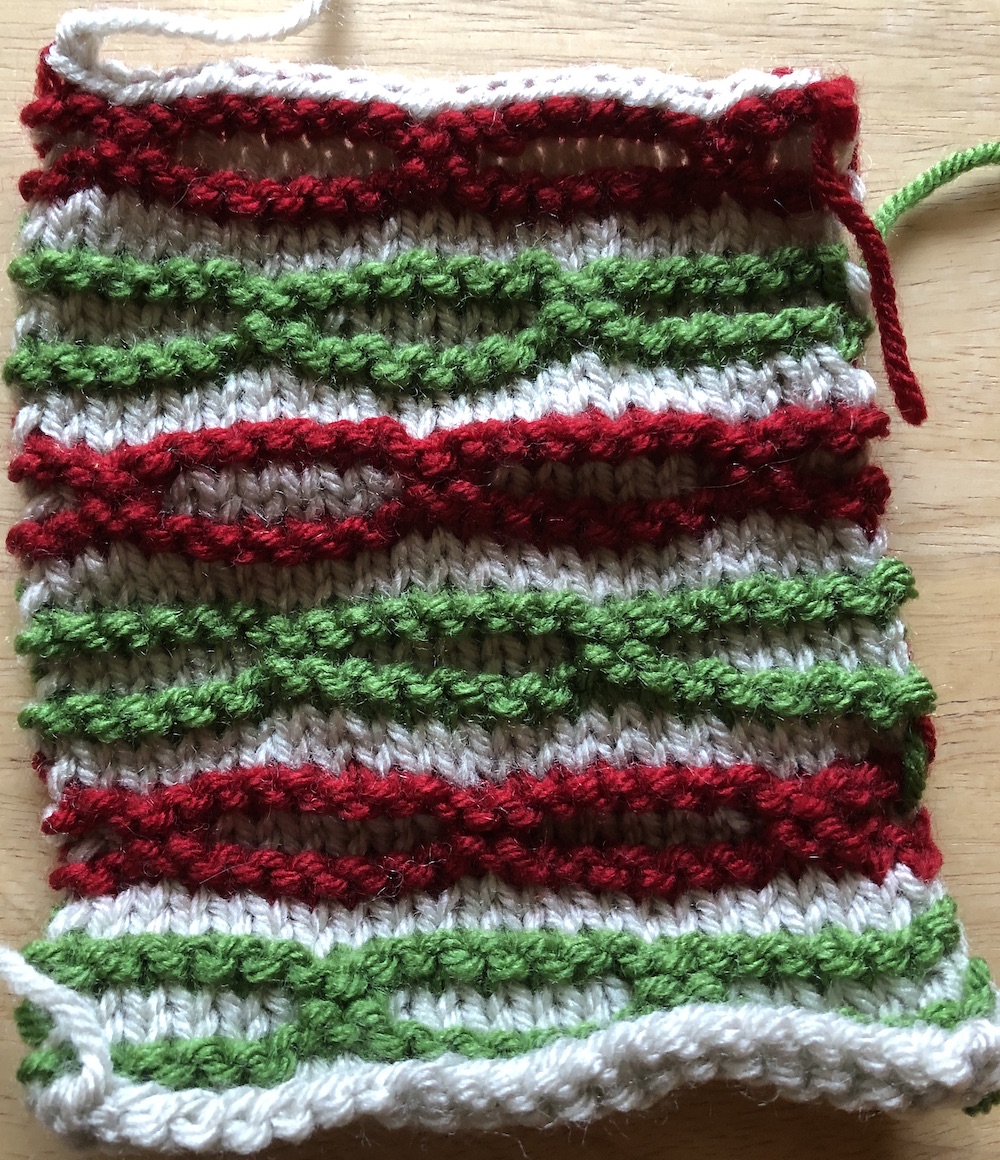
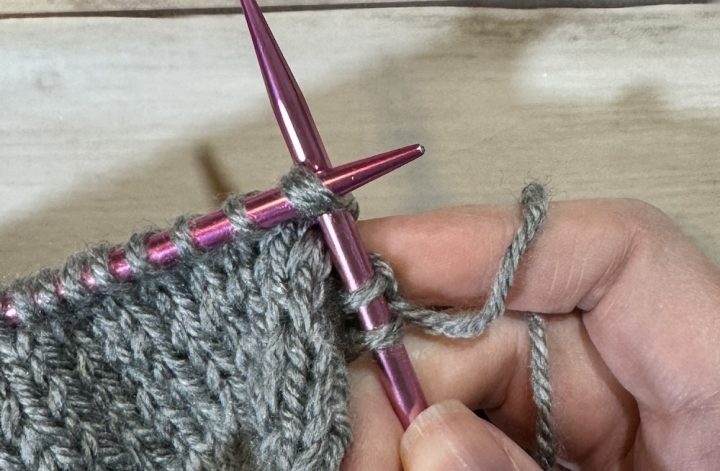
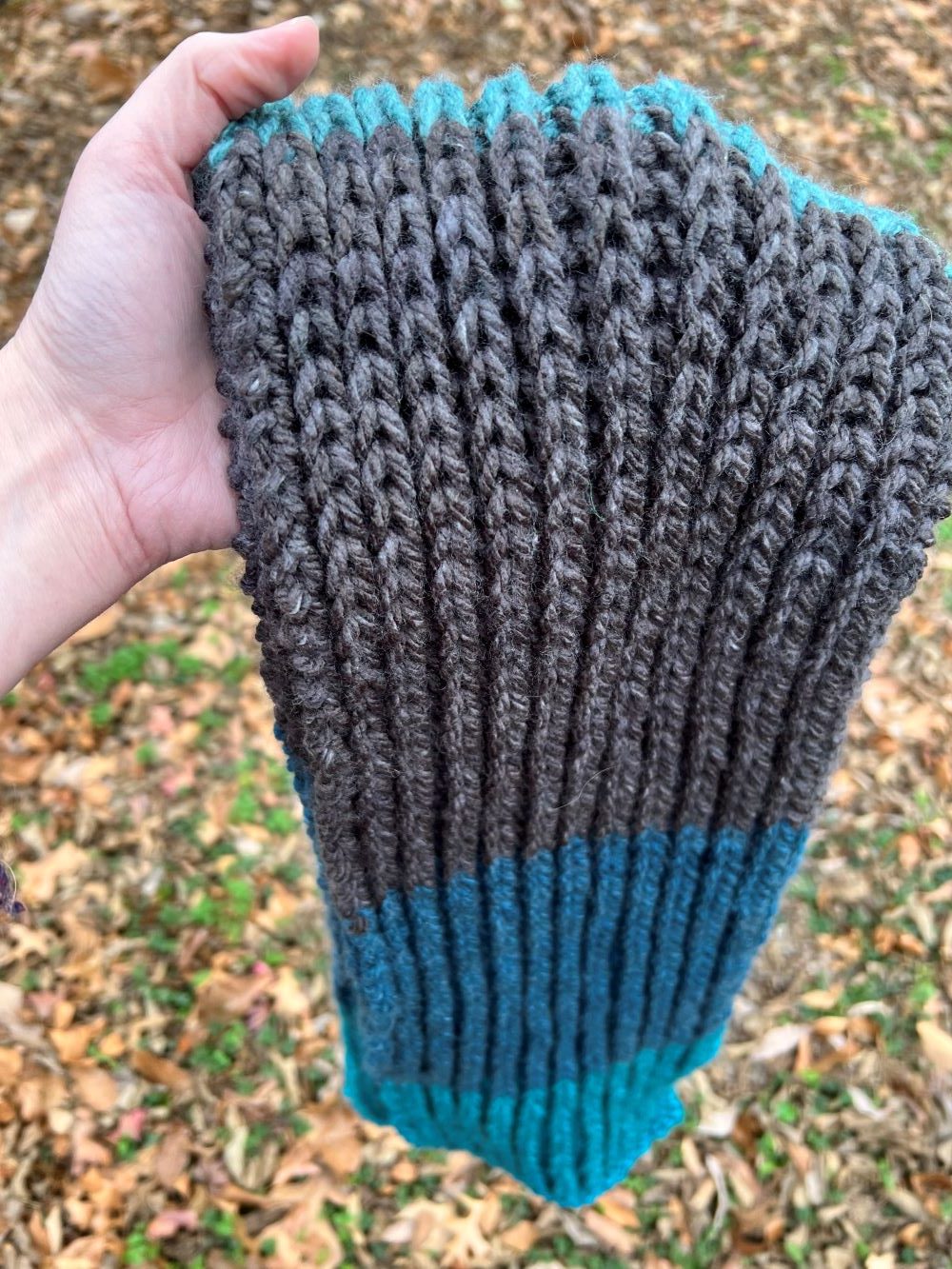

5 Comments
I am not a designer, but I believe it is NOT the designer’s responsibility for yarn substitutions. For me, figuring that out is part of the fun of knitting. There are a few websites I’ve seen that can help with this, such as: https://yarnsub.com/
I don’t think it is the designers responsibility to give yarn substitutions. Yes it is nice if they do and some will. The only thing that I ask is that they tell the weight of the yarn they are using in terms most would understand example weight in 0-6. I quite often check things out on Raverly but don’t understand when they put 8 wpi ? like what does that mean and why the ?. Like Judi says there are websites that help with yarn substitutions.
Hi, Kim! WPI stands for wraps per inch. It’s a term spinners use to determine yarn weight. (The higher WPI the thinner the yarn.) As a non-spinner I only use this measure when I’m trying to figure out the yarn weight of an odd ball.
Agreed! I think it’s fun, too.
Oh I didn’t know we can do that, thanks for sharing I guess I should try 🙂